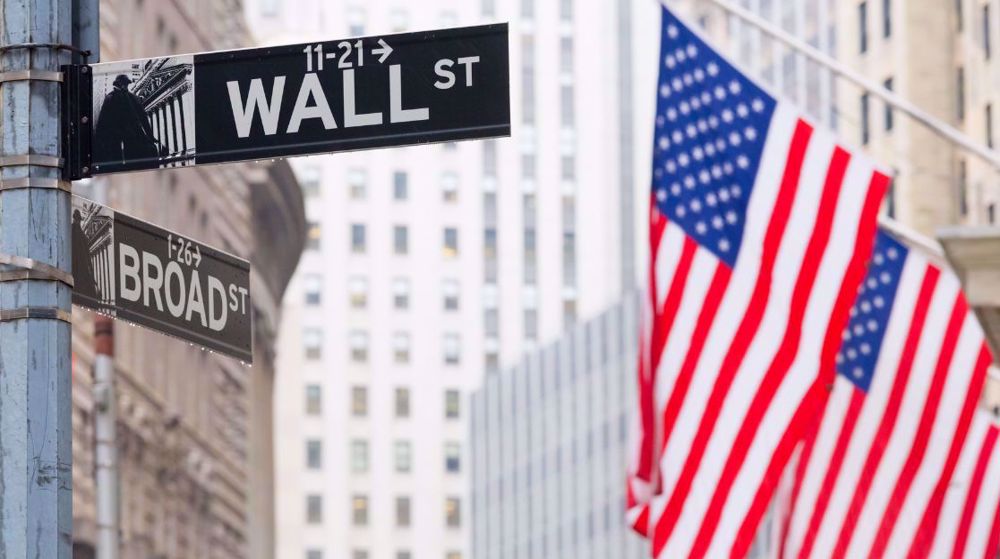US dollar crashes to lowest level in almost three months
The US dollar index fell on Friday, hitting its lowest level in almost three months, after strong economic data from China favored commodity currencies over safe havens and equity markets continued their rally.
The dollar has fallen more than 2.2% so far this month as global market sentiment has surged following Joe Biden’s election victory and positive COVID-19 vaccine progress, which reduced demand for the safe-haven currency.
The Australian dollar hit its highest level since September after news that China’s industrial firms grew in October for a sixth consecutive month and at their quickest pace since early 2017, pointing to a steady recovery in the manufacturing sector after it was hard hit by the COVID-19 pandemic.
The British pound declined against the euro as the European Union and Britain said there were still substantial differences over a Brexit trade deal as the EU chief negotiator prepared to travel to London in a last-ditch attempt to avoid a tumultuous finale to the five-year Brexit crisis.
Along with China data and Brexit headlines, Erik Bregar, head of FX strategy at Exchange Bank of Canada in Toronto cited month-end selling of the U.S. dollar as investors look to balance portfolios after solid monthly gains for equities.
“There’s been talk all week that the U.S. dollar will see waves of selling going into Monday,” said Bregar who also noted “dollar selling into the London fix every day this week.”
Wall Street’s main indexes rose and the Nasdaq hit a record high as optimism around an economic rebound next year outweighed concerns around an expected surge in coronavirus infections following Thursday’s U.S. Thanksgiving holiday.
“The markets have a tendency to perhaps look through the fact that we’re going to have a really nasty Q4, possibly a very nasty Q1 too, in terms of economic data in Europe and the US, and look through to the better times ahead,” said Jane Foley, senior FX strategist at Rabobank.
“We’ve seen various stock market indices at all-time highs, so the dollar under pressure. Also keeping the dollar under pressure is this perception that the Fed will act, will pressure the yield curve lower, if need be, particularly if there continues to be a delay over the fiscal package,” she said.
The U.S. Federal Reserve’s latest meeting minutes said that policymakers could give new guidance on bond-buying “fairly soon”.
The dollar was down 0.24% against a basket of major currencies after hitting its lowest level since Sept. 1. The dollar-yen was down 0.16%.
The Australian dollar - seen as a liquid proxy for risk - hit its highest level in nearly three months in early London trading and was last up 0.5% at 0.7394.
Australia’s second-largest state, Victoria, which was once the country’s COVID-19 hotspot, said on Friday that it has gone 28 days without detecting new infections.
Sterling was down 0.03% against the dollar and the euro was up 0.26% against the British currency.
The euro was up 0.29% at $1.1945, having shown little reaction to downbeat comments from the European Central Bank’s chief economist Philip Lane on Thursday.
With market participants long on the euro, Rabobank’s Foley said that euro-dollar could face downsides as the ECB has signalled that it is watching euro appreciation. The EU budget which includes the COVID-19 recovery fund has not yet been approved.
(Source: Reuters)
Leader: Israel destined for departure; al-Aqsa Storm can’t be quenched
Hezbollah: 'Fully prepared to counter Israeli aggression, ambitions’
Iran’s gold imports at 61.5 mt in 8 month to late Nov: IRICA
VIDEO | Resistance prevails: Israel's 'disgraceful defeat' in Lebanon
VIDEO | Sana'a university protests call for global action on Gaza
US must investigate Israel’s use of American weapons in Lebanon: Rights group
Biden pushing ahead with $680mn arms sale to Israel
Iran to expand overseas farming to 2mln hectares by 2029










 This makes it easy to access the Press TV website
This makes it easy to access the Press TV website